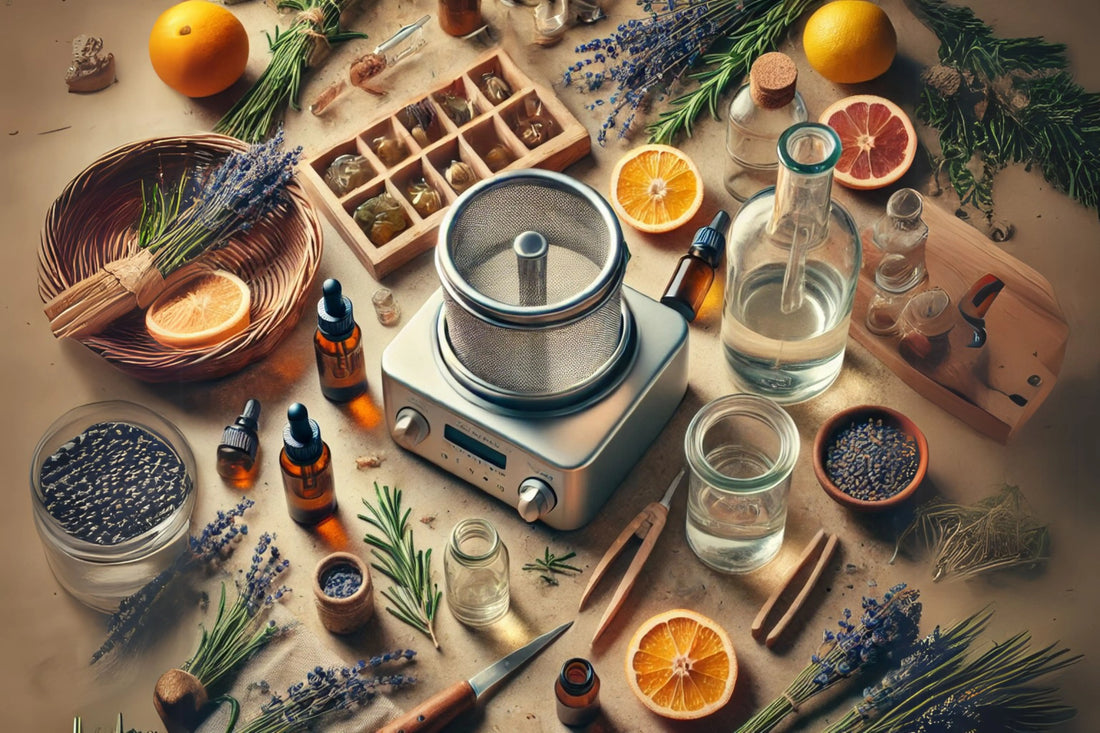Essential oils are oils from plants in high concentration that capture their beneficial and therapeutic properties. Used for natural remedies, skincare, and even natural cleaning products, these oils can be expensive when store-bought. Learning how to make essential oils at home ensures purity and customization as you can create a product from scratch.
Understanding Essential Oil Extraction Methods
There are several extraction methods for obtaining oils from plant materials, each suited to different types of plant material. Here are the most common methods:
- Steam Distillation (Most Effective Method) – Uses plenty of water to extract volatile compounds from fresh plants like the rosemary plant or lavender batch.
- Cold Press Extraction (Best for Citrus Oils) – Involves mechanical pressure to obtain oils from citrus peels.
- Solvent Extraction (For Delicate Flowers) – Uses chemicals to extract oils, but it’s not recommended for home use.
- Oil Infusion (Beginner-Friendly Alternative) – Soaks plant matter in a carrier oil - either olive oil or jojoba oil.
Choosing the Right Plants for Essential Oils
Some plants yield more oil than others, and the type of plant material determines the best essential oil extraction method.
Best Plants for Home Extraction:
- Lavender essential oil – Great for relaxation and skincare products.
- Rosemary plant – Known for therapeutic properties and boosting blood pressure circulation.
- Peppermint – Aids digestive issues and offers cooling relief.
- Eucalyptus – Helps with respiratory health.
- Lemon and Orange Peels – Used for cold-press extraction, ideal for cleaning products.
DIY Essential Oil Extraction Step-by-Step
A. Steam Distillation Process (Best for Most Plants)
Materials Needed:
- Fresh plants (e.g., lavender, rosemary, peppermint)
- Pot of water
- Copper stills or stainless steel distillation setup
- Glass separator
- Glass tube
- Dark glass bottle for storage
Process:
- Place plant material in the distillation unit.
- Add plenty of water and heat to an optimal temperature.
- As the steam rises, it carries volatile compounds through a glass tube.
- The vapor condenses back into liquid, separating oil from dark water.
- Collect the oil using a glass separator and store it in an airtight container.
B. Oil Infusion Method (Simple Alternative)
Materials Needed:
- Dried plant matter (e.g., lavender, chamomile)
- Carrier oil (e.g., jojoba oil, olive oil)
- Glass jar with an airtight container
- Crock pot (optional for heat infusion)
Process:
- Put the dried plant material in a glass jar.
- Pour in a carrier oil until fully submerged.
- Let it sit in a dark color area for 24-36 hours.
- Strain using cheesecloth and store in a dark glass bottle.
Storing and Preserving Your Essential Oils
To maintain freshness and potency, follow these guidelines:
- Use dark glass bottles or a 10ml glass roller bottle.
- Store in a dark, cool place, away from direct sunlight.
- Use a glass spray bottle for diluted applications like oil room spray recipes.
Safety Tips for Making and Using Essential Oils
- Before applying topically, always dilute oils with carrier oils.
- Avoid phototoxic oils (e.g., citrus oils) before sun exposure.
- Be cautious with allergic reactions and perform a patch test.
- Keep out of reach of children and pets.
Creative Ways to Use Homemade Essential Oils
- Aromatherapy – Add a few drops of your homemade EO to a diffuser.
- DIY Skincare – Blend into body wash or lotions.
- Cleaning Products – Mix with distilled water and vinegar in a glass spray bottle.
- Roller Blends – Create essential oil rollerball recipes for everyday use.
- Room Sprays – Try oil body spray recipes for a light mist fragrance.
Conclusion
Making essential oils at home is a rewarding aromatic adventure that allows for high-quality, customized products. Whether using the steam distillation process, oil infusion, or cold-press extraction, you can enjoy natural remedies with confidence. Start experimenting today and share your experiences!




